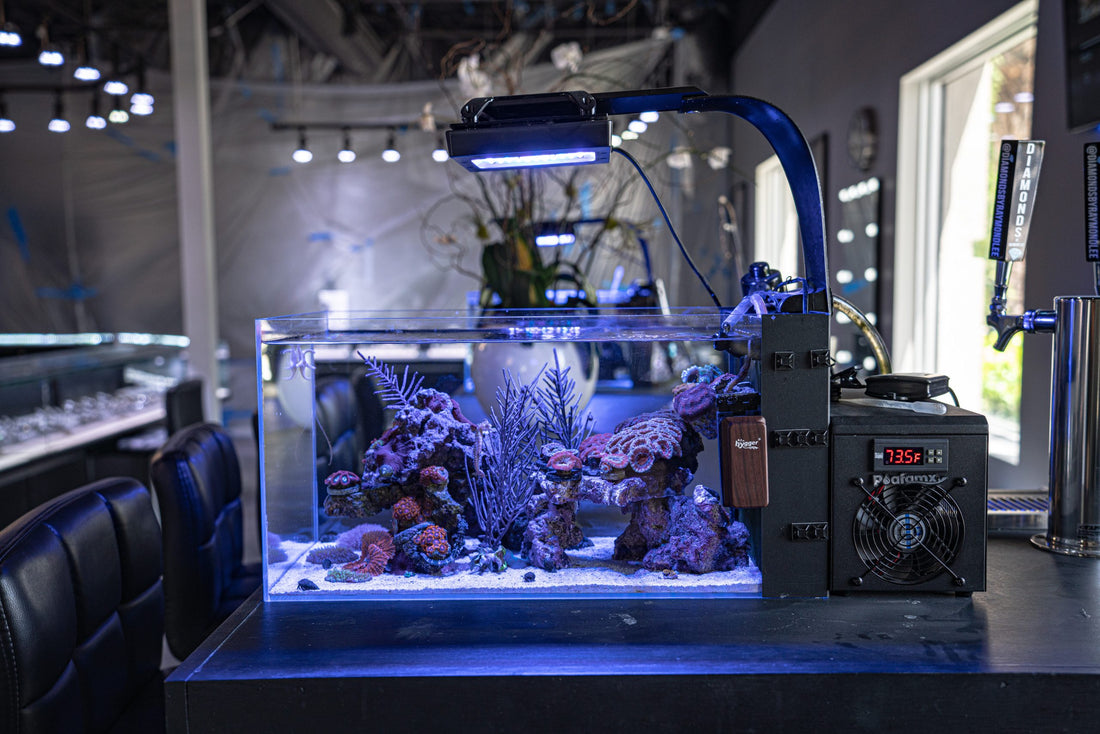
Boca Aquarium Girl: Erectus Seahorses
The Enigmatic World of Erectus Seahorses
The ocean, with its vast expanse and mysterious depths, is home to an array of fascinating creatures, each with its unique life cycle, appearance, and habitat. Among them is the elegant and captivating erectus seahorse. A combination of grace, vulnerability, and adaptability, the erectus seahorse, often referred to as the lined seahorse, is a marvel of marine evolution.

Appearance and Physical Features
Native to the western Atlantic, the erectus seahorse (Hippocampus erectus) boasts a slender and elongated body, uniquely built to seamlessly blend into its surroundings. They have a series of rings and lines across their bodies, from which they derive their name “lined seahorse”. Their colors range from a yellowish-orange to reddish-brown, often speckled with small white dots. This coloration aids in camouflaging them amidst seagrass and coral reefs, hiding them from predators and helping them surprise their prey.
An erectus seahorse can grow up to a length of about 7 inches, making it one of the larger seahorse species. A notable feature of the erectus, as with all seahorses, is its prehensile tail. This tail, which can be coiled and uncoiled at will, is vital for anchoring the seahorse to a stationary object during strong currents or while resting.
Diet and Feeding Habits
The erectus seahorse is a carnivore, feeding mainly on small crustaceans, such as copepods, amphipods, and even tiny fish. They are ambush predators. This means they patiently wait for their prey to come within range and then swiftly snap them up using their long snouts. Their method of feeding is truly unique: they create a vacuum by rapidly sucking in water through their snouts, which pulls the unsuspecting prey into their mouths.
Reproduction and Life Cycle
What makes seahorses particularly intriguing is their reproductive process. It is the male seahorse that becomes pregnant. The female deposits her eggs into a brood pouch on the male's body. The male then fertilizes the eggs and carries them for a duration ranging from 10 to 25 days, depending on the water temperature. Once the gestation period is over, the male expels fully developed young seahorses, often in numbers ranging from 5 to over 1,000, depending on the species and conditions.
Post-birth, the juveniles are on their own, facing the vast ocean and its numerous challenges. The survival rate is quite low, with only a few making it to adulthood. However, those that do survive grow rapidly and can start reproducing within a few months.

Threats and Conservation
Like many marine species, erectus seahorses face a plethora of threats. Overfishing, either for use in traditional medicine, aquarium trade, or as curiosities, is one of the primary challenges. Furthermore, habitat destruction, primarily from coastal development and pollution, threatens the seagrass beds and coral reefs that the seahorses call home.
Conservationists worldwide are pushing for stronger regulations and protections for seahorse habitats. Trade is being monitored more closely, and several countries have implemented stringent measures on seahorse exports. Aquaculture or seahorse farming is being viewed as a sustainable alternative to wild harvesting, helping to meet the demand for seahorses without depleting wild populations.

Conclusion
The erectus seahorse, with its unique physiology, captivating behavior, and intricate life cycle, is undoubtedly one of the ocean's treasures. Their survival, however, hinges on the delicate balance of their habitat, which is under constant threat from human activities. By understanding and appreciating these creatures, and by actively working to protect their habitats, we can ensure that future generations also get to witness the marvel of the erectus seahorse. Whether you're a marine biologist, an environmental enthusiast, or just someone who marvels at the wonders of the deep, the story of the erectus seahorse serves as a poignant reminder of the intricate tapestry of life that the oceans hold and our responsibility to protect it.
